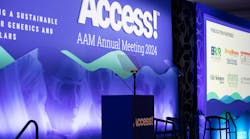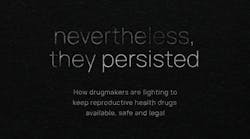Prescription drug pricing has arguably become the biggest issue in U.S. healthcare. Indeed, healthcare is an “unbelievably complex subject” and resolving our country’s drug pricing problem will be no simple task. When the Trump administration submitted its Fiscal Year 2019 Budget Request to Congress in February, the proposal cited several possible solutions to combat rising drug costs.
One prominent solution highlighted in the proposed budget was generic drugs. The proposal included several provisions designed, in theory, to give the U.S. Food and Drug Administration greater ability to bring generics to market faster.
Health and Human Services Secretary, Alex Azar, has consistently mentioned the administration’s strong support for FDA efforts to spur innovation and competition in generic drug markets. During the 2018 Association for Accessible Medicines (AAM) Annual Meeting, this sentiment was echoed by the Honorable Eric Hargan, Deputy Secretary, HHS, when he called generics “vital to the future of our healthcare system.”
With insurance, the average monthly out-of-pocket cost for a generic prescription is $5.54
Source: Quintiles IMS, via AAM
Generic and biosimilar drugs have rightfully earned their place as part of the solution. In the U.S., generics account for 89 percent of prescriptions dispensed but only 26 percent of total drug costs.1 Generics have saved the U.S. healthcare system $1.67 trillion in the last decade, generating $253 billion in savings in 2016 alone.1But with far fewer financial and human resources than the branded pharma industry, generics, according to AAM President Chip Davis, are notorious underdogs. Battling public misperceptions, legislative hurdles and anti-competitive actions being taken by brand manufacturers, the generics and biosimilar industries have their work cut out for them in their quest to restore the balance between branded innovation and generic access. But, thoroughly convinced of what Davis refers to as the “unbelievable value proposition” of their products, the generics industry is not going down without a fight.
PERCEPTION IS REALITY
For those connected to the pharmaceutical industry, it may seem difficult to comprehend confusion surrounding the safety and efficacy of generic drugs. Backed by extensive bioequivalence testing, approved generic formulations must provide the same therapeutic effect as branded medicines. The FDA has clear and accessible information on the topic, stating that a generic medicine “works in the same way and provides the same clinical benefit as its brand-name version. In other words, you can take a generic medicine as an equal substitute for its brand-name counterpart.”
And yet, numerous public perception studies and literature reviews tell a different story: Many consumers still equate lower price with lower quality. A 2009 U.S. survey² found that one-third of patients were uncomfortable with generic substitution to some extent. About 10 percent believed that generic drugs could cause more side effects than brand-name drugs. While more recent surveys have noted a substantial shift towards more patients having positive views of generic drugs (in one study, 88 percent considered generic drugs to be as safe as brand-name counterparts3), negative perceptions still linger, especially amongst less educated demographics.
The generics industry’s image problem is not helped by frequent news reports of recalls, 483s and import bans connected to manufacturers based in India — the world’s largest exporter of generic drugs. In 2015, half of the FDA warning letters were sent to Indian pharma sites, which account for roughly 24 percent of the U.S. generics market.4 While significant investments in automation, training and regulatory collaboration have resulted in Indian pharma plants receiving less than a third of U.S. FDA warning letters in 20175, quality concerns still adversely affect public perception of generic drug safety.
There’s also confusion based on superficial details. Trademark laws in the U.S. prohibit a generic medicine from looking exactly like drugs already on the market. Different shapes, coatings or colors can cause confusion and, ultimately, distrust among patients — especially in the case of chronic drug treatment, where patients know and track their meds by appearance.
Whether real or perceived, misconceptions about generic drugs linger, and still present challenges for generics manufacturers.
LEGISLATIVE HURDLES
While the generics industry has scored some recent wins on the federal level — the enactment of GDUFA II, which included the reauthorization of the Biosimilar User Fee Act (BsUFA) and the defeat of the FDA’s problematic draft drug labeling rule, to name a few — losses on the state level continue to create a challenging backdrop.
Between 2005 and 2015, 78% of the drugs associated with new patents were not new drugs coming on the market
Source: May Your Drug Price Be Ever Green, UC Hastings Research Paper No. 256
At present, 30 states have drafted news laws, dubbed “transparency” legislation, requiring manufacturers to report to the state a variety of information that is thought to justify drug price increases over specified thresholds. For example, in Oregon — the most recent state to adopt a drug transparency law — if a manufacturer wants to increase the price of a drug by 10 percent or more and it’s already priced at more than $100 per month, the drugmaker must report costs for R&D, advertising and marketing, as well as profits for the drug, whether generic alternatives are available, and what the drug costs in other countries.
In California, the law applies to drugs worth more than $40 per month, requiring that manufacturers alert state agencies and health insurers 60 days before implementing a price increase of more than 16 percent over a two-year period.
“States are stepping in and attempting to deal with drug costs where they feel federal policies have failed,” Davis says.
While only a handful of states have signed these bills into law, according to the National Academy for State Health Policy databases, state legislatures are currently considering 51 bills focused on drug price transparency and 12 focused on price gouging.6
AAM has called this type of legislation “well-intentioned but misguided,” noting the failure of these policies to account for “the unique challenges facing and biosimilar medicines.”7 In the case of Maryland, the trade group took opposition a step further, requesting a federal injunction on the grounds that the law is unconstitutional.
Maryland’s price gouging law — the first of its kind in the U.S. — was signed into law in April 2017 without the blessing of the Maryland governor. Under the Maryland law, drugmakers who increase the cost of an off-patent or generic drug by more than 50 percent in one year can incur a fine of up to $10,000. Maryland governor, Larry Hogan, had expressed concerns regarding the vagueness of terminology used, such as “unconscionable increase” and “excessive,” as well at noting possible violations of interstate commerce laws. AAM’s injunction request echoed these concerns, claiming that the new law gives Maryland “unprecedented power to regulate interstate commerce,” as well as protects high-priced brand name drug companies because it only applies to generic drugs.8
In September 2017, a U.S. district judge denied the association’s request for an initial injunction but allowed litigation to move forward on AAM’s contention that the law is vague.
Proponents of the Maryland law, however, claim it to be an important step forward in stopping an alarming trend of companies drastically raising the price of older medications. According to transparency law backers, these price hikes often come with no justification in relation to innovation or access.
Policy that doesn’t properly address the differences between the generic and branded drug supply chains and markets can threaten the sustainability of a competitive generics market. Basic economic principle dictates that more suppliers of a good creates lower prices for consumers, so, ironically, policy that creates consolidation within the generics industry can also birth a more monopolized environment conducive to the very price gouging these policies seek to eradicate.
SOMETHING HAPPENED ON THE WAY TO MARKET
For generic drugs, last year’s record number of FDA approvals (1,027 new generic approvals, five biosimilar approvals) only tells half the story.
According to Davis, one can’t measure generic success solely on FDA progress.
“It’s a two-step process,” Davis says. “While it’s true that you can’t be on the market without FDA approval, once you are approved, you need sufficient incentives to enter and stay in the market.”
So what’s holding generics back? In many situations, it’s a case of “shenanigans,” according to prevailing opinion at the AAM Annual Meeting, as well as FDA Commissioner Scott Gottlieb.
During Gottlieb’s meeting with the Federal Trade Commission last fall, he strongly advocated for a balance between rewarding drug innovation and giving patients access to drugs by encouraging competition, pledging that the agency would work to better address unfair practices used by branded manufacturers that forestall generic entry.
In 1984, Congress enacted the Hatch-Waxman Act — a bill commonly considered the cornerstone for competition between brand and generic pharma companies. The act, which established government regulations for generic drugs, has successfully produced a thriving marketplace by balancing innovation in drug development and accelerating the availability of lower cost generic alternatives.
But in an effort to preserve profits on expiring patents, brand manufacturers have begun using tactics that appear to frustrate the intent of the Hatch-Waxman Act, obstructing generic competitors.
One well-known loophole used to delay generic approval is known as “REMS abuse.”
The FDA Amendments Act of 2007 gave the agency the authority to require a Risk Evaluation and Mitigation Strategy (REMS) from manufacturers for certain drugs. REMS programs are designed to help reduce the occurrence and/or severity of certain serious risks, by providing additional safe-use information to patients and providers.
Using REMS as justification, some branded companies have established restricted distribution networks, which means manufacturers of generic and biosimilar drugs cannot get access to product samples they need in order to obtain FDA approval and market entry. In 2017, Gottlieb said the FDA had received more than 150 inquiries to date from generic companies claiming they were unable to access supplies of the reference listed drug to do the testing needed for a generic application.
To address this issue, generic and biosimilar manufacturers began supporting the Creating and Restoring Equal Access to Equivalent Samples (CREATES) Act. Currently pending in Congress, the act allows generics manufacturers who have cleared FDA approval to sue non-cooperative brand manufacturers for access to their drugs in two different scenarios: if the companies fail to reach an agreement on the development of a single, shared REMS system; or if the innovator company fails to provide samples of a drug or biological product within 31 days of request.
There exists strong opposition to the CREATES Act from brand manufacturers, who note both financial and safety concerns. Branded companies claim that requesting companies do not always have adequate safeguards in place to address the unique risks presented by the drug in question, putting both trial subjects and researchers at risk. Branded companies have also voiced concerns that the CREATES Act will bring about significant and, in their opinion, frivolous litigation costs. Branded companies also claim that being legally obligated to sell samples to generics companies constitutes an obligation to take on the burden of manufacturing enough product for several companies to run multiple studies.
Evergreening (referred to as “patent manipulation” or “life cycle management” depending on which side of the debate you are on) is another well-established strategy used to extend a branded drug’s market monopoly. This strategy involves branded manufacturers seeking extra patents on variations of the original drug, such as on new dosages, new combinations or variations, or new forms of release.
The use of evergreening is so prolific that recent research examining FDA records between 2005 and 2015 found that 78 percent of the drugs associated with new patents were not new drugs coming on the market, but rather, existing drugs. Additionally, the research found that of the 100 best-selling drugs, almost 80 percent extended their protection at least once, with almost 50 percent extending protection more than once.9
The problem with this, says generic industry proponents, is that companies are obtaining patent protection for changes that are neither innovative or novel, and delaying patient access to more affordable drugs.
“In these cases, you have to ask the most important question: How does this possibly benefit patients?” says Davis.
FIGHTING BACK
For the generics and biosimilar industry, the Goliath-sized battle starts with their own message. In many ways, this is a different approach for an industry not used to advocating to the degree in which the current landscape demands.
“You need to protect your sector like the brand companies have learned to do,” said Charlie Cook, famed founder of The Cook Political Report, to a packed room at the AAM Annual Meeting.
Davis echoed that sentiment, advising the industry, “We need to do a better job telling our story.”
AAM is following its own advice. The group rebranded itself last year, shedding the name “Generic Pharmaceutical Association” in favor of “The Association for Accessible Medicines,” simultaneously launching a patient-centered multimedia advocacy campaign, and taking an overall more assertive approach to federal and state advocacy.
The generics and biosimilar industries continue to add their voices to the drug cost narrative, hopeful that their efforts to educate and engage both the public and policymakers about generic/biosimilar drugs will help restore the country’s balance between generic access and brand-name innovation.
“When we don’t engage, we end up living with results rather than delivering them,” Davis says.
Among the most important of these results will be greater patient access to affordable, safe and effective medications.
REFERENCES
1. Association for Accessible Medicines, 2017 Generic Drug Access and Saving Report in the U.S.
2. Håkonsen, Helle and Toverud, Else-Lydia. Review of patient perspectives on generics substitution. Generics and Biosimilars Initiative Journal.2012;1(1):28-32.
3. Kesselheim et al. Variations in Patients’ Perceptions and Use of Generic Drugs. J Gen Intern Med. 2016 Jun; 31(6):609-14.
4. Altstedter, A., Hopkins, J., Modi, M. With U.S. Generic Drug Market in Chaos, Indian Upstarts Rise. Bloomberg. (Aug. 31, 2017).
5. Phadnis, Aneesh. Warning letters to Indian pharma companies from US FDA declining. Business Standard. (Feb. 22, 2018).
6. State Legislative Action on Pharmaceutical Prices, accessed March 16, 2018.
7. Statement of Chester Davis, Jr. Senate Health, Education, Labor and Pensions Committee. The Cost of Prescription Drugs: How the Drug Delivery System Affects What Patients Pay. (Oct. 17, 2017).
8. AAM Requests Federal Injunction to Block Maryland’s Unconstitutional Drug Price Law. (July 6, 2017).
9. Feldman, Robin and Wang, Connie, May Your Drug Price Be Ever Green. UC Hastings Research Paper No. 256. (Oct. 29, 2017).



